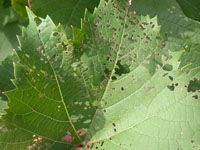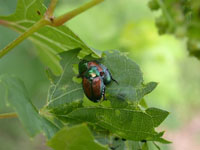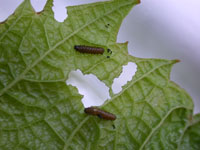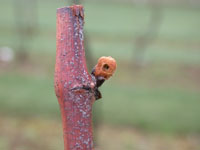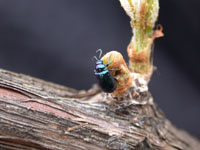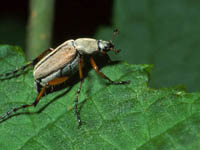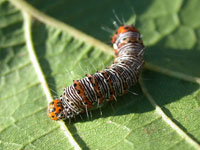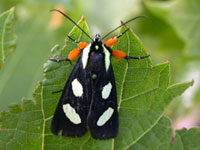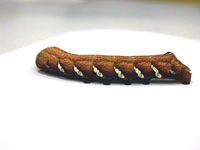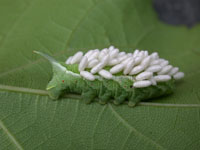Extension > Garden > Diagnose a problem > What's wrong with my plant? > Fruit > Grape > Holes in leaves
Grape > Leaves > Holes in leaves
1 of 5
Japanese Beetle
- Skeletonize leaves, i.e. chews tissue between veins, leaving foliage lace-like
- Adults are a brilliant metallic green with copper-brown wing covers, five white patches of hairs on each side of the abdomen, and two patches of white hair on the tip of abdomen
- Adults present June through July
- More information on Japanese Beetle
2 of 5
Grape Flea Beetle
- Larvae feed on leaves, avoiding leaf veins
- Feeding damage is greatest at leaf borders
- Larvae are small (1/4" when mature), light brown with dark mottling and a black head
- More information on Grape Flea Beetle
3 of 5
Rose Chafer
- Can skeletonize leaves, i.e. chews tissue between veins, leaving foliage lace-like
- Feed on blossoms, chewing holes in them
- Occurs in late May and June
- Up to nearly 1/2 inch in length; slender tannish beetle with reddish-brown spiny legs
- More information on Rose Chafer
4 of 5
Eightspotted Forester
- Larvae eat entire grape leaf with the exception of heavy veins and petiole
- Larvae are present in June and July
- Larvae are colorful; white with bright orange stripes, black lines and black spots. It also has an orange head with black spots, and is 1 ½ inches long at maturity
5 of 5
Hornworms
- Larvae eat entire leaf, including leaf veins
- Hornworm larvae are the largest caterpillars in Minnesota. Larvae develop eight white, lateral "v-shaped" marks. Most hornworms have a black projection or "horn" on the last abdominal segment
- Larvae are present in July and August
- More information on Hornworms



